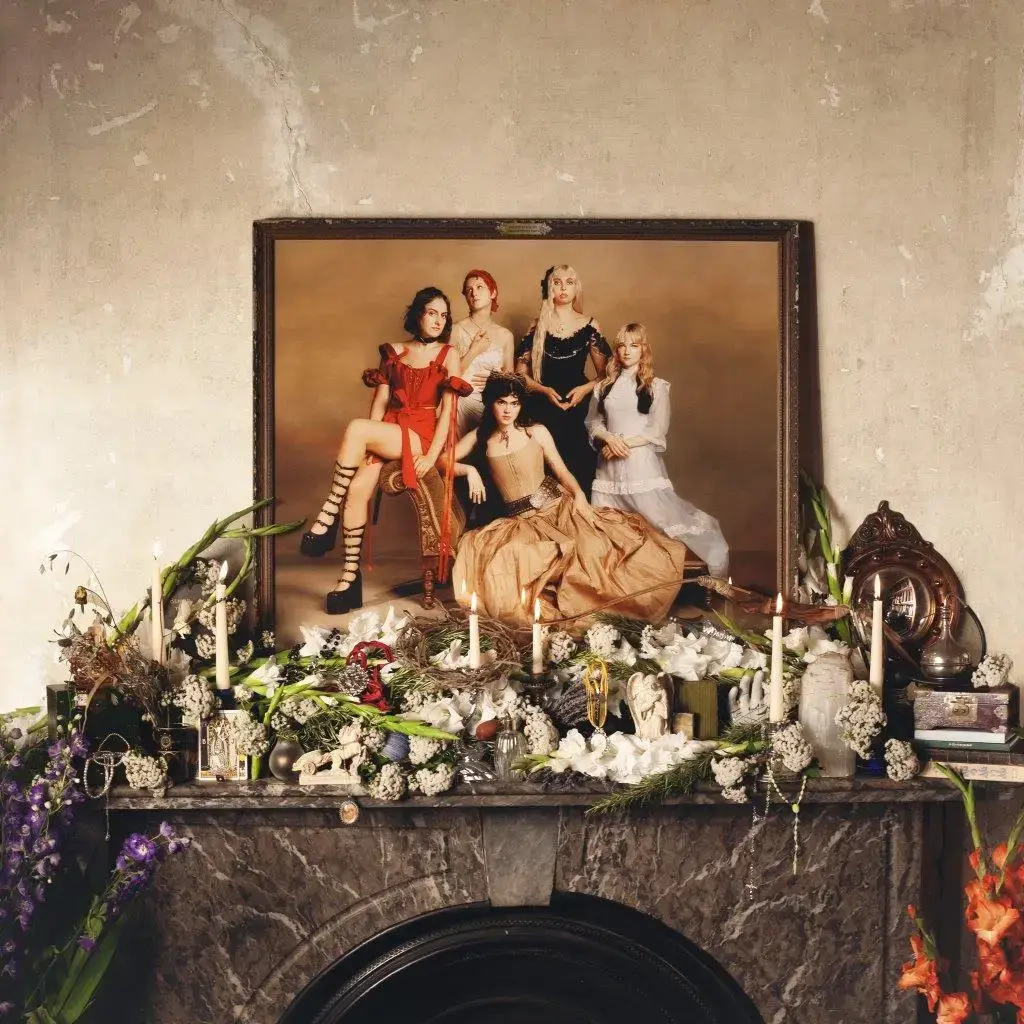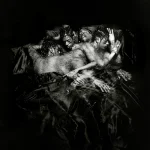
Album Review: The Last Dinner Party – Prelude to Ecstasy
The Last Dinner Party appears to have been conjured out of thin air. Who are they? Where did they come from?
Only one year ago, the U.K. band released their electrifying debut single, “Nothing Matters.” Since then, the band has slowly released a couple more singles before unleashing their first full-length record, Prelude to Ecstasy, earlier this month. Yet, in the time between, the hype for the female and non-binary band has been crescendoing: they have opened for the Rolling Stones, Florence + the Machine, and Hozier; won the BBC Sound of 2024 Poll, and won the Brit Rising Star award.
As a debut album, Prelude to Ecstasy feels sure of itself in its aesthetics and sound. There is a cohesive sense of theatricality within the music, especially in tracks like “Caesar on a TV Screen” and “My Lady of Mercy.” The band is not afraid to shy away from the baroque with the deployment of lush strings, mystical woodwinds, and switch-ups that could give any listener whiplash (but in the best way possible!). The band have created a rich tapestry of indulgent rock and fantastical soundscapes.
Despite the uniqueness of the Last Dinner Party’s sound, there is no denying the influence of great artists within their work. On the sweltering “Sinner,” a staccato piano riff reminiscent of Queen’s “Killer Queen” breaks loose to buzzing guitars. “Portrait of a Dead Girl” recalls classic Bowie glam rock: tension that pushes and pulls you, Mick Rock-esque guitars, and hypnotic choir vocals to punctuate the track. TLDP draws upon musical history to create moments of familiarity while concocting songs that are entirely fresh and unique.
Furthermore, musical mothers, such as Kate Bush and Florence + the Machine, loom large within the Last Dinner Party’s musical repertoire. Just like these iconic artists, the band carry on a tradition of creating strange bacchanalian confections that draw from art history and the gothic. “Burn Alive” is a bombastic song about being burned at the stake that could fit right in on Kate Bush’s landmark The Hounds of Love. And, one cannot help but to hear Bush in the way lead vocalist, Abigail Morris, snarls her words on “Caesar on a TV Screen.” The crashing chorus on “My Lady of Mercy ” and the church-like vocals are undeniably Florence + the Machine-like flourishes that serve to enhance the song’s central theme of religion (another Florence trademark).
Lyrically, Ecstasy revolves heavily around the female experience in a patriarchal world. “The Feminine Urge” is a standout track in which girlhood is likened to being “a dark red liver, stretched out on the rocks” that converts poison into love. On “Portrait of a Dead Girl,” Abigail Morris likens herself to portraits of powerful women with beasts on a chain who are also in danger of death at the hands of man despite their power. At some points, there is even a desire to be a man–to live a life that is simpler and easier without the weight that being a female carries (“Beautiful Boy,” “Caesar on a TV Screen”).
TLDP hits their stride when they rock out; however, when they decide to slow down and show more bones in their work, the results are not as invigorating. “Beautiful Boy” is lovely (the panflute is unexpected, yet fitting). “Gjuha” is lush. Yet, that is just it with these tracks: they wash away in comparison to their other more lavish and ornate songs.
With Prelude to Ecstasy as their first step into the spotlight, the Last Dinner Party shows promise and originality in a rock field that often feels lifeless and lost. The band have crafted a tapestry of rich, mysterious lyrics and sounds that demand your attention like ill-fated actors upon a stage. When Morris sings: “so turn and face me / turn to the altar of lust,” you are drawn into their world, and you wait, begging to witness more of their spectacle.
Reviews
User Score
Rate This
Tags
Leave your comment
You must be logged in to post a comment.









I’m a big Kate bush fan and normally I don’t listen to too much of today’s pop. After reading this article I’m definitely going t have to check them out.